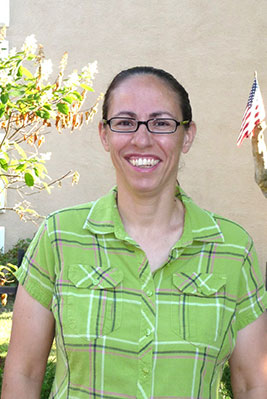Levich Institute Seminar Announcement, 03/10/2020

2:00 PM
Steinman Hall, Room #312
(Chemical Engineering Conference Room)
York College of CUNY
Growth and Dispersion of a Phase-Separated Inclusion of Unfolded Protein
ABSTRACT
All major neurodegenerative disorders are characterized by the accumulation of large aggregates of unfolded protein, called inclusions, in cells of the nervous system. We consider the dynamics of this process with the goal of elucidating the mechanisms by which unfolded protein inclusions are initiated and material is incorporated into them.
Huntington’s Disease (HD) is the result of mutations in huntingtin protein (mHtt) that cause it to become unstable, leading to unfolding and aggregation. We study this process using a fusion of mHtt with the fluorescent protein GFP; this protein fusion allows us to image both large inclusions and smaller aggregative particles of unfolded mHtt in living cells. The mHtt inclusion in yeast is a mobile, gel-like compartment that releases mHtt.
Particle tracking of small aggregates indicates that they move randomly, suggesting that the inclusion body grows through coalescence with small aggregates that diffuse through the cytoplasm. Our model predicts that (1) the growth rate of the inclusion body would increase with increasing surface area of the inclusion itself, and that (2) establishment of an inclusion body would require surpassing a threshold concentration of mHtt. To establish the relationship between concentration and growth, we have tracked the growth of individual inclusions in cells with varying cytoplasmic levels of mHtt We find a concentration threshold below which inclusions do not form. Growth of the radius is linear with time, consistent with surface area determining reaction rate for a particular cytoplasmic concentration of mHtt. Furthermore, reduction of the cytoplasmic concentration of mHtt to very low levels causes the inclusion to shrink, a process which we believe is mainly mediated by enzymes in the inclusion itself. The loss of fluorescence reveals a persistent core particle of mHtt, suggesting that the inclusion may be nucleated.
BRIEF ACADEMIC/EMPLOYMENT HISTORY:
- Ph.D. Columbia University Biochemistry and Molecular Biophysics
- B.S. University of Pittsburgh Chemistry and Music
MOST RECENT RESEARCH INTERESTS:
My work has focused on cellular processes in neurons. My main research interests focus on identifying and characterizing factors that influence the formation of unfolded protein aggregates, using the Huntingtin protein expressed in S. cerevisiae as a model system. Unfolded protein aggregates are believed to be the fundamental cause of neurodegenerative diseases such as Alzheimer’s, Parkinsons’s and Huntington’s. The techniques that I use to address these questions include genetics, molecular biology, and quantitative fluorescence microscopy.

